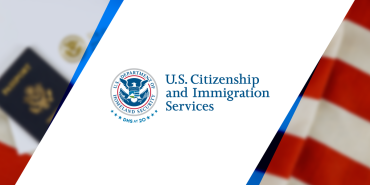Green Card and Visa Holders Can Fly in US Under Real ID Rules, Here’s What to Know

With the full enforcement of the Real ID Act now in effect as of May 7th, millions of Americans and non-citizens are encountering new identification protocols that are reshaping domestic travel and sparking debate over immigration policies.
The federal mandate requires all US citizens aged 18 and older to present a Real ID-compliant card or an approved alternative form of identification to board domestic flights and access federal facilities, marking a significant shift in domestic security measures. Originally passed in 2005 in response to the 9/11 Commission's recommendations, the Real ID Act was conceived to fortify national security by establishing uniform standards for state-issued identification documents.
The aim was to eliminate vulnerabilities that previously allowed individuals to obtain fraudulent IDs and move undetected across state and national boundaries. The implementation, however, has been fraught with delays, and its final activation has rekindled anxieties surrounding accessibility, privacy, and its complex intersection with immigration policy.
Unlike conventional state-issued driver's licenses or identification cards, Real ID-compliant documents adhere to stringent federal security standards. Applicants are required to furnish substantial documentation to verify identity, Social Security status, lawful residency, and proof of address. While the specific requirements vary depending on the state, they generally encompass the following:
1. Proof of identity via a US birth certificate, passport, or green card.
2. Social Security verification through a Social Security card, W-2 form, or pay stub.
3. Two proofs of residence, such as a utility bill or mortgage statement.
4. A valid visa or employment authorisation document for non-citizens.
Real ID cards are easily identifiable by a distinguishing mark – a gold or black star or a US flag – located in the upper right corner. Identification documents lacking these indicators will not be accepted for domestic flights or entry into federal buildings, including courthouses and nuclear facilities. However, the Transportation Security Administration (TSA) recognises a range of alternative identification forms.
Travellers without Real ID-compliant identification are not entirely barred from flying domestically, with options including US passports, Department of Defense IDs, trusted traveller cards (Global Entry, SENTRI), green cards, and foreign government-issued passports. This built-in flexibility ensures that individuals who have not yet obtained a Real ID or do not qualify for one can still navigate airport security using alternative credentials.
Immigration Implications
While the primary goal of the new ID requirements is to bolster domestic travel security, immigration experts contend that the policy may have unintended consequences for non-citizens. A notable concern centres on the visibility and potential scrutiny of foreign passports. According to immigration attorney Prerna Lal, non-citizens who present passports from their countries of origin during interactions with federal authorities may be subject to increased examination of their immigration status.
While lawful permanent residents and visa holders can present approved travel documents, individuals who lack legal immigration status may face heightened risks. The Real ID Act’s enforcement also coincides with evolving immigration enforcement practices, especially those that intensified during the Trump administration. Although Trump's administration emphasises the deportation of criminals and undocumented individuals, its policies occasionally ensnare US citizens and legal residents in immigration actions. Advocates worry that mandating reliance on foreign identification for specific groups could inadvertently expose them to additional scrutiny.
For immigrants with temporary legal status, obtaining a Real ID is possible, albeit under stringent regulations. Federal guidelines classify "temporary lawful status" to include individuals with pending asylum applications, approved temporary protected status, deferred action recipients, and those awaiting lawful permanent residency.
These individuals can obtain a Real ID by providing documentation confirming their legal status, such as employment authorisation documents and Social Security numbers. However, the validity of a temporary Real ID is inherently tied to the applicant's immigration status. Consequently, once a temporary visa or authorisation expires, the associated Real ID also becomes invalid.
Furthermore, states have adopted different policies regarding the issuance of Real IDs to non-citizens. For example, in Florida, most immigrants with lawful status are required to renew their Real ID annually. The exception is green card holders, whose Real ID remains valid until their green card expires, typically a decade after issuance.
Consequences of Non-Compliance
Travellers who arrive at airport security checkpoints without a Real ID or an approved alternative form of identification may undergo additional screening procedures. TSA officers can initiate an identity verification process, wherein passengers provide personal information, answer security questions, and undergo enhanced scrutiny before being permitted to board. However, this process is not guaranteed, and travellers lacking proper documentation may be denied access.
Beyond air travel, states that issue identification cards to undocumented individuals must clearly mark them as "non-compliant" with Real ID standards. These cards often feature distinct colouring or designs to differentiate them from federally approved identification. While they remain usable for state-level purposes, such as driving or accessing local services, they cannot be used for domestic travel or entry into federal facilities.
Despite efforts to streamline the Real ID transition, concerns persist regarding its implications for immigration enforcement and travel accessibility. Experts caution that the policy's rollout could disproportionately affect marginalised communities, including immigrants who rely on foreign passports as their primary form of identification. Given that the TSA's list of approved IDs is subject to change, travellers are advised to stay informed about the latest updates to avoid potential complications.








Add new comment